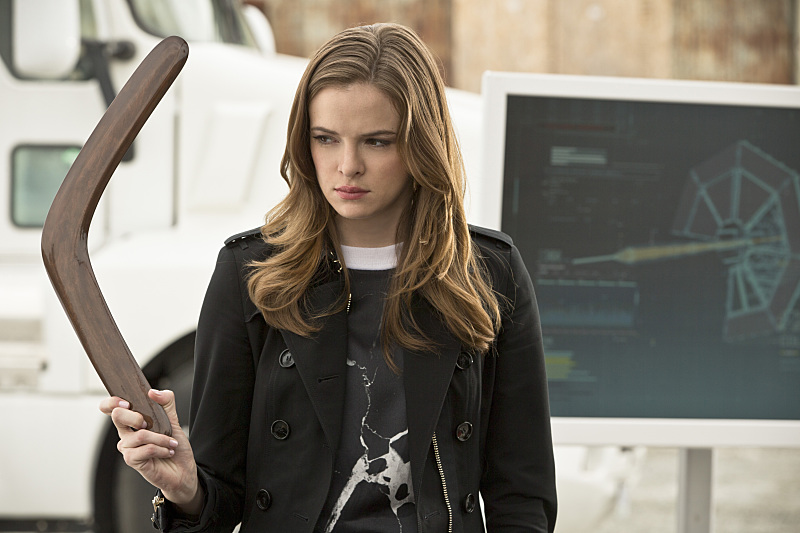Gerry Conway Says DC Entertainment is Ripping Off Creators
It's not like you don't have the money, DC.

Whenever you see comic book characters leap off the page and into a new medium – like all the DC shows on television right now – you’re probably thinking Wow! Whoever created these characters must be making BANK! Not necessarily. In fact, thanks to changes that happened once DC Comics became DC Entertainment, comic creators are making a lot less.
In a Tumblr post written by comics creator Gerry Conway, he talks about how once DC became DC Entertainment, there was a shift in a program called “Creator Equity Participation,” which pays creators for characters they’ve created when they appear in other media. So, for example, when Bruce Timm put Killer Croc in Batman: The Animated Series, Conway got a nice chunk of change. Conway explains how it worked BDCE (Before DC Entertainment):
The reason, I believe, is the shift of corporate culture at DC Comics that occurred around the time Paul Levitz left his position as publisher.
As a comic book creator himself, Paul displayed a protective empathy for creators. Once the creator equity concept became policy, Paul applied it liberally and proactively– often notifying writers and artists their creations were due to receive equity participation when creators would otherwise have no idea. For thirty plus years, under Paul, creators were valued and supported as equity partners. (We can argue about the level of support, whether the percentage creators received was commensurate with their contributions, but we can’t deny that the support was there, and it was consistent.)
All of that changed when Paul left, and DC Comics became, officially, DC Entertainment, a fully subsumed cog in the Warners Entertainment wheel.
He then describes how it works ADCE:
I first learned how this change would effect DC’s approach to creators equity when I received a letter from DC Entertainment’s new president, Diane Nelson, informing me I would no longer receive equity payments for Power Girl because she was now considered a “derivative” character. To soften the blow and show “appreciation” for my “contribution” she enclosed a check for $1000.
Thank you, Diane.
The next thing I learned about DC Entertainment’s new approach to their comic creators equity program was just as distressing, given how many characters I created for DC over the decade-plus I wrote for the company: if I wanted to receive an equity participation contract for a character I created, I had to request one, in writing, for each character, before that character appeared in another media, because DC would refuse to make equity payments retroactively.
By a rough guesstimate, I probably created over five hundred characters for DC between 1969 and 1985. Most of them were minor one-shot creations, and some of them, like Felicity Smoak (now a regular on Arrow) were minor supporting characters who’ve taken on a new life in other media. Unless I’m willing to commit a large chunk of my life to tracking down each character and filing a separate equity request in anticipation that somehow, some day, one of these characters might end up on a TV show, I risk being cut off from any share in the fruits DC enjoys from the product of my labor. A share which DC acknowledges I’m due– but which DC refuses to assist me in receiving.
Thank you, DC.
And then he describes the utterly confusing logic of the additional hoops creators have to go through, and may STILL not see a dime for their creations:
What, exactly, is DC’s definition of a “derivative” character?
It’s a character that DC decides was “derived” from some other previously existing character.
For example, Power Girl– “derived” from Superman, because, like Supergirl, she’s a relative of Superman. Which means I can’t claim to be her co-creator because Superman is a pre-existing character. Fair enough, I suppose. The logic here is that Superman is the original creation, so Power Girl is derived from that original creation, so in effect, Power Girl is an extension of Superman, which means, by this tortured logic, that Power Girl was more or less created by Jerry Siegel and Joe Shuster.
Uh, no.
But here’s the really crazy bit:
Let’s say DC agrees you created a character, like, for example, Killer Frost. In your original creation, Killer Frost had a secret identity named Crystal Frost. Later, a “new” Killer Frost is created for the New 52, and this new Killer Frost has a secret identity named Caitlin Snow.
You’ll be pleased to hear (I hope) that DC agrees I and Al Milgrom are the co-creators of all manifestations of “Killer Frost.” We are also considered the co-creators of Crystal Frost. And, of course, by the twisted logic that credits Power Girl as a derivation of Superman, Al and I must also be the creators of Killer Frost’s New 52 secret identity, Caitlin Snow.
Right?
No. We’re not. And DC insists we are not. And I agree with DC.
Caitlin Snow was created by Sterling Gates and Derlis Santacruz.
Except, according to DC Entertainment, she wasn’t. Because she was “derived” from the original creation of Killer Frost.
Which means Al Milgrom and I created her.
Except, according to DC Entertainment, we didn’t.
Nobody created her.
Or, rather, nobody gets credit and creator equity participation for creating her.
Check out Conway’s full post for addition details and spurious logic. That’s some shady, shady business, DC. Please know that consumers of your products actually LIKE when creators get paid what they’re owed. Just so you know.
We reached out to DC Entertainment who had no comment at this time.
(via The Outhousers)
—Please make note of The Mary Sue’s general comment policy.—
Do you follow The Mary Sue on Twitter, Facebook, Tumblr, Pinterest, & Google +?
Have a tip we should know? tips@themarysue.com